Dorfanger
What did Tempelhof actually look like as a village? Hardly anyone suspects that the gras strip in Alt-Tempelhof dates back to the Middle Ages. The historic village green has been preserved here, while the surroundings have constantly changed over time.
“You can trace urbanisation right here”
From village green to tenement houses: Siegmund Kroll was a long-time member of Tempelhof’s planning department. Using specific buildings as examples, he explains how the village became part of Berlin and what it gained, lost and rediscovered along the way.
Audio transcription
Here you will find the podcasts audio transcription >>
My name is Siegmund Kroll.
When Tempelhof and Schöneberg merged to form one district I became the director of the urban development office and head of Tempelhof-Schöneberg’s historical preservation agency.
Tempelhof has a very special urban development situation, because it really shows you how a village developed into a major suburban municipality, and you can trace this progression on a number of buildings. Tempelhof was affected relatively late by the expansion of Berlin. That was mainly because of what’s now the Tempelhof airfield but what used to be a military parade ground between Berlin and Tempelhof, which blocked routes to the south for a long time. A certain level of traffic to Tempelhof only set in when the Berlin-Kottbusser Chaussee was paved – around the mid-19th century. The Kreideweiß restaurant in Tempelhof was a popular leisure destination. It was rebuilt after the first world war, again as a dining establishment. There was quite a long tradition of social life here.
A move to build housing started in the mid-19th century when speculators bought up the old estate grounds in order to divide it into lots. But they couldn’t build on it because too many lots went to rich Berliners who then moved to the southwest instead of Tempelhof. The first development – which is also something special – is a settlement that arose in Neue Straße. You can still see the progression today. Neue Straße is a street that essentially goes off to the north from Tempelhof, with renaissance-style buildings typical of Berlin at the time. They’re at numbers 12, 14, 16, 18, 20, 22, 24 and 26, and are definitely worth a visit because they’re Tempelhof’s first non-farming settlement, which launched the urbanization process. But they’re a unique development that wasn’t repeated.
The tendency toward something like tenement blocks, like the typical ones you now see around Tempelhofer Damm, didn’t start until after around 1905 or 1906. On the other side of Alt-Tempelhof you can see three remnants of the old village on the village green. They’re old farmhouses built in the mid-19th century. The previous buildings were destroyed by fire in the early 19th century. Most of them had a half-timbered structure with thatched roofs which caught on fire very quickly of course. After that people used tiles instead of thatching for the roofs.
The farmers now had a little more money, so they could build plastered brick homes with tile roofs. Three of these buildings still stand at Alt-Tempelhof 35 and 37, also east of Tempelhofer Damm on Alt-Tempelhof 10 to 12. They’re the only buildings remaining from the farming period, although they’ve been restructured in major ways over the decades. But you can get a general idea of these homes of farmers who became prosperous – similar to those on the village green in Schöneberg.
There’s another building of interest at the western end of Alt-Tempelhof. It was built by a housing cooperative, despite opposition by Tempelhof residents. The idea was to provide housing for workers at the nearby Tempelhof rail repair depot and the Schultheiss brewery. The residents didn’t really want workers to move in. After lengthy negotiations, however, the project succeeded. You can see it at Alt-Tempelhof 46 and 52. It’s a really interesting building that reflects the new approaches taken by housing cooperatives, with sophisticated architecture and well-designed units for workers. The complex extends into Borussia Straße and Stolberger Straße, and is an intriguing example of this part of Tempelhof’s history.
[00:05:29] There’s another important building that I’ve already mentioned. On the site of the old Kreideweiß restaurant, a new building arose after the first world war, in a style typical of the Gründerzeit period, with four storeys and a large mansard roof. It was used for housing as well as commercial purposes, including restaurants. That’s still evident if you face the building located right on the corner of Alt-Tempelhof and Tempelhofer Damm. If you look over at it from the old village green, you’ll see the huge windows on the first floor above ground. Those were the old dance halls. The interesting thing is that these dance halls were hidden by the retail shops that were there until 2000-2006, which had lowered the ceilings. When the shops were gone, the original ceilings were exposed and the beauty of the building behind them became visible. That makes the building especially interesting today too, in its dual housing and restaurant uses.
[00:06:53] Here’s perhaps another special aspect of the initial housing settlements. I mentioned Neue Straße, but there’s another building that shows the plans for development in the mid-19th century. It’s a two-storey villa at Alt-Tempelhof 18, and it’s a beautiful clinker brick building with stucco ornamentation, in something of a Swiss style you might also see in villa colonies in southwestern parts of Berlin, like Friedenau or Lichterfelde. Speculators actually intended to fill Tempelhof with homes of this type. That’s another important element in the development of housing in this area. Maybe less so now from the perspective of historical preservation. The building right next to it, called the “Serumhaus”, is also of interest. Built after 2000, it reflects the structure of its surroundings. Its dimensions take an especially harmonious form, with curves that tend not to be typical of modern styles. It’s yet another intriguing building that has appeared in recent years.
Traces of the old village

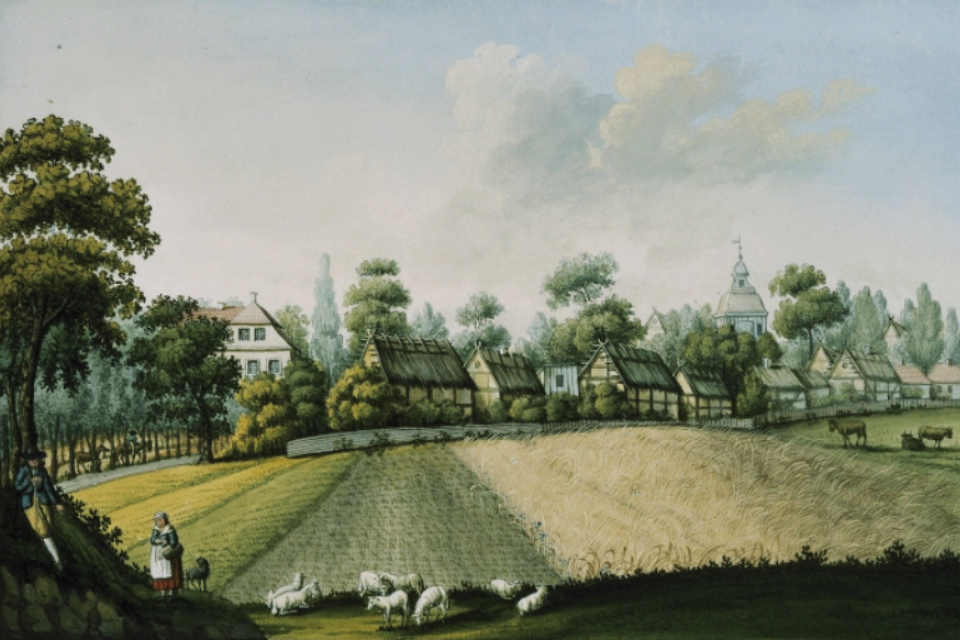


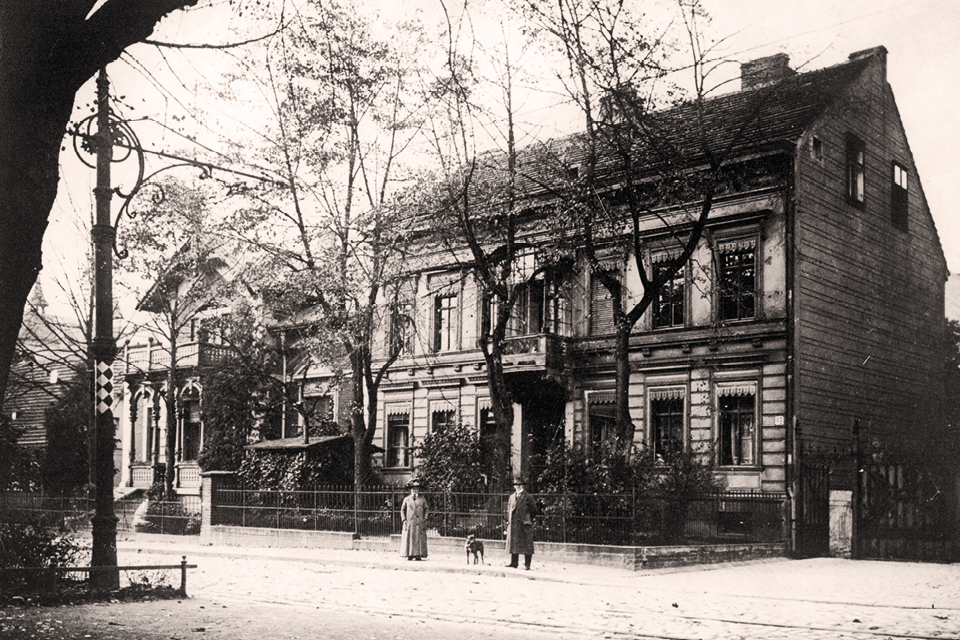

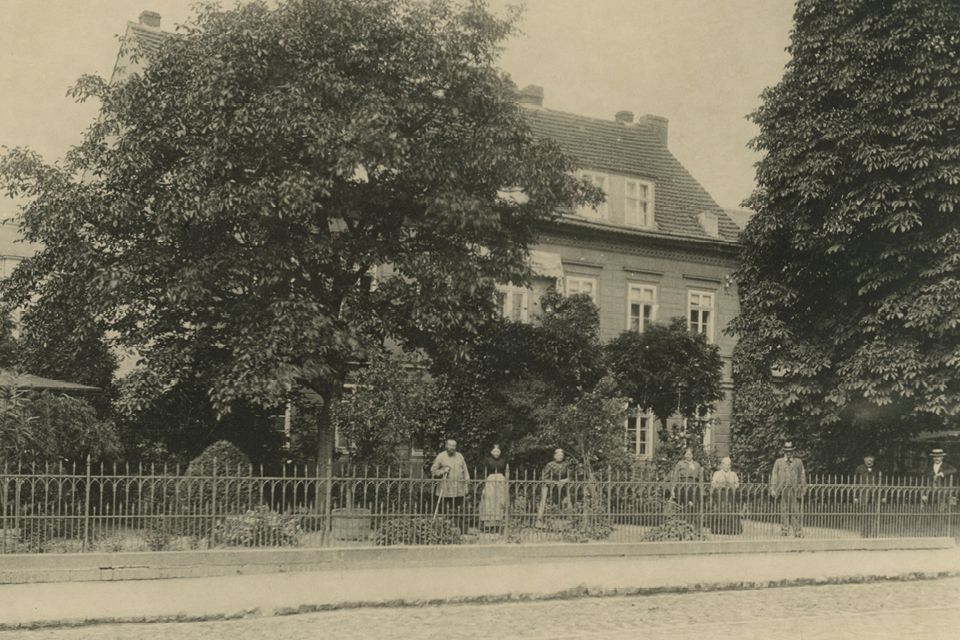
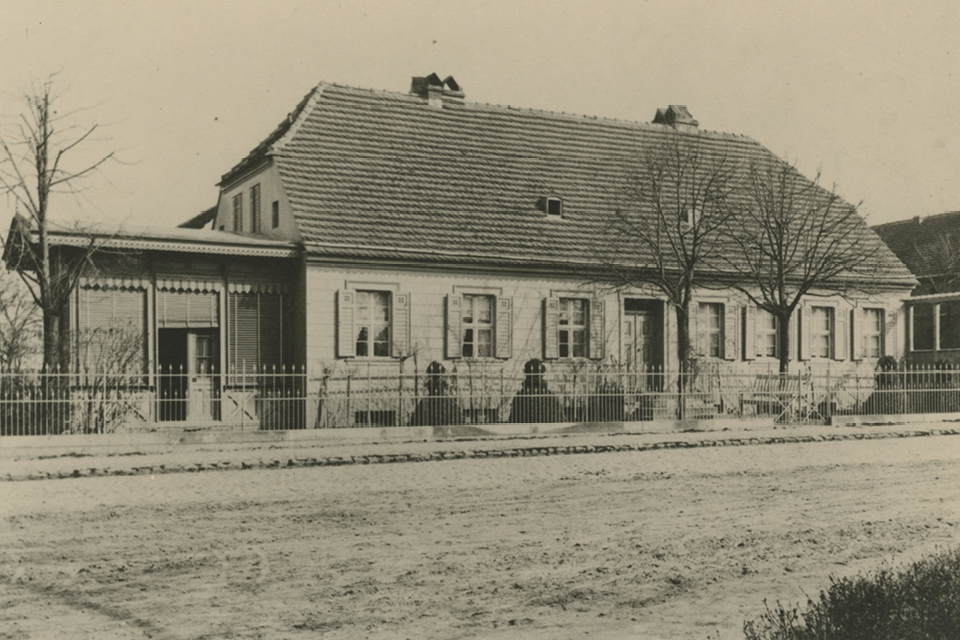
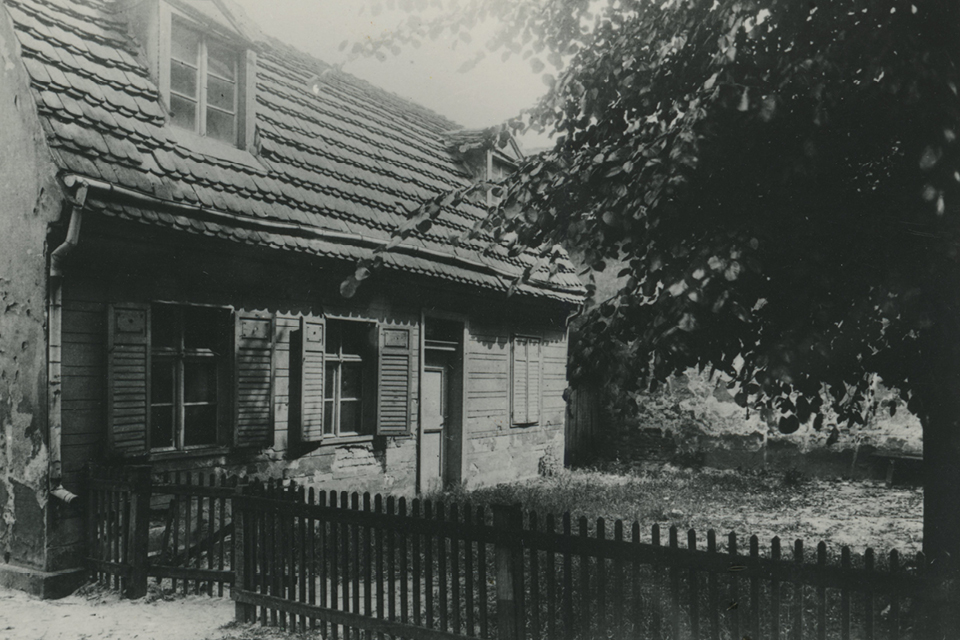
Centre of village life
Modern and medieval Berlin meet at the corner of Alt-Tempelhof and Tempelhofer Damm. The long strip of vegetation on the traffic island used to be the village green and centre of village life. Old village greens can also be found in the districts of Schöneberg, Marienfelde, Mariendorf and Lichtenrade. Paths circled the green here in Tempelhof and farmers’ homes stood along the paths. Their half-timbered buildings had simple straw roofs and fields extended out from their yards. The unit of measurement for fields was the “Hufe”.
Everyday life on farms
One “Hufe” is the amount of land that a farming family could cultivate with a single plough. Life for farmers in the Middle Ages was hard. They generally did not own the fields themselves. Instead, they had to pay high rents and fees to the landowners living on the Tempelhof knights’ estate. There were three groups of fields: some for summer grain, some for winter grain, and some to lay fallow. The very few farmers who owned land held high positions in the strict village hierarchy. Some families cultivated an entire “Hufe” of land. Others did three quarters, half or a quarter of a “Hufe”. Cotters, or small farmers, had only fruit and vegetable plots. A “Schulze” was the person in charge of law and order. He was usually a “Lehnschulze”, or land-holding vassal. Holders of this position led the community until 1750. The position was inherited, with the eldest son receiving not only the farm but also the job of settling disputes and making legal decisions. This was done on Sundays after the church service. A “Lehnschulze” could keep part of the fines he imposed. Every third pfennig went to him and his family. The “Lehnschulzenhof” building with the village courthouse still stands where Alt-Tempelhof and Tempelhofer Damm meet. The southern edge of its fields bordered the village church. In 1751 an entrepreneur named Vierhuff settled on the land and brought the first factory – a silk spinnery – to Tempelhof. In 1663, Huguenots planted Berlin’s first mulberry trees. They were part of a campaign to make more silk in Prussia. Raw silk is made from the cocoons of silk moth larvae that pupate on the leaves of mulberry trees. Vierhuff’s factory was part of a movement promoted in the 18th century under King Friedrich Wilhelm I. Hoping for Prussia to compete with China and Japan, the king called on farmers, teachers and labourers to plant mulberry trees and produce silk. Vierhuff’s factory, however, was not very successful. In 1901 Wilhelm Lehne bought the property for his son, who took over the Helwig pub at the site.
From village to city
Change accelerated around 1800. Noble and wealthy families bought and sold land in the area for a profit. Tempelhof’s village character changed ever faster. Some of the farming families prospered. They sold their land on today’s Tempelhof airfield to the Prussian military for training and parade grounds. Soldiers begin using farming land in 1722. Friedrich Wilhelm I paid up to 2,000 talers a year to Tempelhof’s farmers for the resulting damage. By comparison: around 1850 a five-person family could feed itself for a week on around 3.5 talers. But the relatively high sum was not enough to compensate for failed harvests. In 1827 the Tempelhof municipality finally sold most of its fields to Prussia. Berlin was expanding and moving closer to Tempelhof. The “Tempelhof suburb” between Hallesches Tor and the Tempelhof airfield grew rapidly in the Gründerzeit period. In 1920 the village of Tempelhof was completely surrounded by settlements. The Greater Berlin Act of 1920 made it officially part of Berlin.

